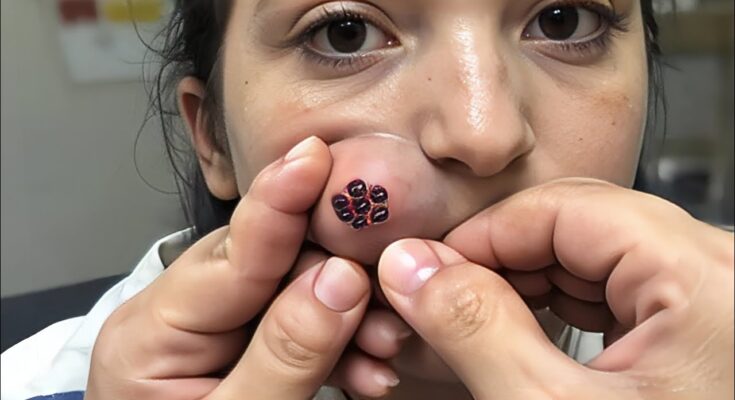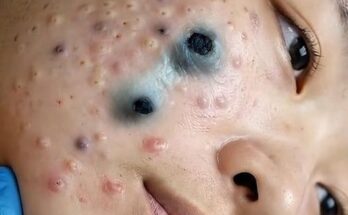When it comes to skincare, few topics cause as much confusion as choosing between salicylic acid and benzoyl peroxide.
Both are widely used ingredients in products that help manage acne and breakouts, and both can make a noticeable difference in how your skin looks and feels.
However, they work in different ways, and knowing which one suits your skin can help you achieve the best possible results without irritation or frustration.
Let’s take a closer look at what each ingredient does, how they differ, and how to decide which one might be right for your skincare routine.

Understanding Salicylic Acid
Salicylic acid is a beta hydroxy acid (often shortened to BHA). It is oil-soluble, which means it can penetrate into the pores to help dissolve excess sebum and remove dead skin cells. This makes it especially useful for people with oily or combination skin, as well as those dealing with blackheads and clogged pores. In simple terms, salicylic acid works like a gentle exfoliant that goes beyond the surface of the skin. By helping to clear out debris that can block pores, it reduces the chances of breakouts forming in the first place. Many people find that with regular use, their skin texture becomes smoother and their complexion appears more balanced. Salicylic acid is also known for its soothing properties. It is related to aspirin (acetylsalicylic acid), which has anti-inflammatory effects. Because of that, it can help calm redness and mild irritation associated with acne, making it a good choice for sensitive or reactive skin types. Most products that contain salicylic acid come in the form of cleansers, toners, and leave-on treatments. Over-the-counter concentrations typically range from 0.5% to 2%, which are safe and effective levels for daily use.
Understanding Benzoyl Peroxide
Benzoyl peroxide, on the other hand, is an antibacterial ingredient. It works by introducing oxygen into the pores, which helps eliminate bacteria that contribute to acne formation. Unlike salicylic acid, it doesn’t exfoliate the skin or remove oil directly. Instead, it tackles one of the root causes of acne—bacteria—making it especially effective for inflammatory breakouts such as pimples and pustules. Another unique benefit of benzoyl peroxide is its ability to help prevent bacteria from developing resistance. This means it can stay effective over time, even with consistent use. For people with frequent or severe breakouts, this makes it a reliable ingredient that can deliver visible improvement with patience and proper care. Benzoyl peroxide is found in a range of strengths, usually from 2.5% to 10%. While higher percentages may seem stronger, studies show that lower concentrations can be just as effective while causing less dryness and irritation. Because benzoyl peroxide can be potent, it’s often best to start with a lower strength and apply it sparingly until your skin builds tolerance.
Key Differences Between Salicylic Acid and Benzoyl Peroxide
The main difference between the two ingredients lies in how they work. Salicylic acid targets clogged pores and excess oil, while benzoyl peroxide focuses on bacteria and inflammation. In other words, salicylic acid is ideal for prevention and maintenance, whereas benzoyl peroxide is more suited for treating active breakouts. Salicylic acid tends to be gentler, making it a good starting point for people new to acne-fighting ingredients. It can also be used on most skin types without causing significant dryness. Benzoyl peroxide, by contrast, can sometimes cause flaking or redness, particularly for those with sensitive or dry skin. Using a lightweight moisturizer afterward can help minimize this effect. Another important distinction is that salicylic acid works well on blackheads and whiteheads—those small, non-inflammatory blemishes—while benzoyl peroxide is more effective on inflamed spots that appear red or swollen. Because acne often involves a mix of both types, some people choose to use both ingredients in different steps of their skincare routine.
Can You Use Both Together?
It is possible to use salicylic acid and benzoyl peroxide in the same skincare routine, but it’s important to do so carefully. Both are active ingredients that can dry out the skin if overused. A balanced approach might include using salicylic acid in the morning to keep pores clear and benzoyl peroxide in the evening to target bacteria. Alternatively, you can apply them on alternate days, depending on how your skin responds. If you notice excessive dryness, irritation, or peeling, it’s a sign that your skin needs more time to adjust. Gentle cleansing, consistent moisturizing, and daily use of sunscreen are key parts of any routine that includes active ingredients. Remember, clearer skin doesn’t happen overnight. It often takes several weeks for salicylic acid or benzoyl peroxide to show noticeable results. Being consistent yet patient is the best strategy.
Choosing the Right Ingredient for Your Skin Type
If your main concern is oily skin, blackheads, or mild breakouts, salicylic acid may be your best option. It helps to regulate oil production, refine pores, and smooth uneven texture over time. If you struggle with more inflamed acne or red bumps, benzoyl peroxide might provide faster relief. Its antibacterial action can reduce the size and discomfort of active blemishes while preventing new ones from forming. For combination or persistent acne, using both—at different times—can offer a comprehensive approach. The key is to listen to your skin, start slowly, and avoid harsh layering that could compromise your skin barrier.
Tips for Using These Ingredients Safely
When introducing either ingredient into your routine, start with lower concentrations and apply once a day or every other day. Gradually increase frequency as your skin adjusts. Avoid combining them with other strong actives such as retinoids or alpha hydroxy acids until you know your skin’s tolerance. Moisturizing after application helps maintain balance and comfort, especially if you experience dryness. Choose a gentle, non-comedogenic moisturizer that supports hydration without clogging pores. Sun protection is also essential. Both salicylic acid and benzoyl peroxide can make your skin more sensitive to the sun, so daily sunscreen use helps protect your progress and prevent irritation.
Final Thoughts
Salicylic acid and benzoyl peroxide are two of the most trusted ingredients in modern skincare, and for good reason. While they work differently, both can help promote a clearer, more balanced complexion when used correctly. Salicylic acid shines as a deep-cleaning exfoliant that keeps pores clear and smooth, making it ideal for prevention and maintenance. Benzoyl peroxide stands out for its powerful antibacterial action, targeting the root cause of inflammatory acne. The choice ultimately depends on your skin type, your concerns, and how your skin reacts to active ingredients. Some people find success using just one, while others combine them for a more comprehensive approach. No matter which you choose, consistency, patience, and gentle care are the real keys to lasting improvement. Skincare is a journey that takes time, but understanding your skin and using the right ingredients thoughtfully can make all the difference in achieving healthy, radiant results.


